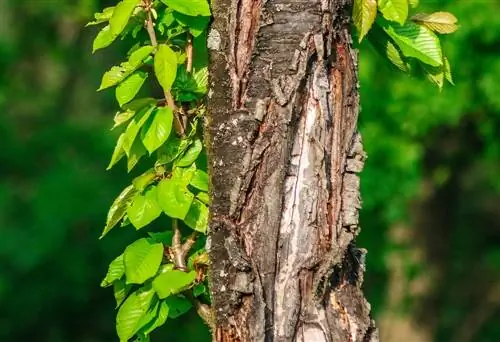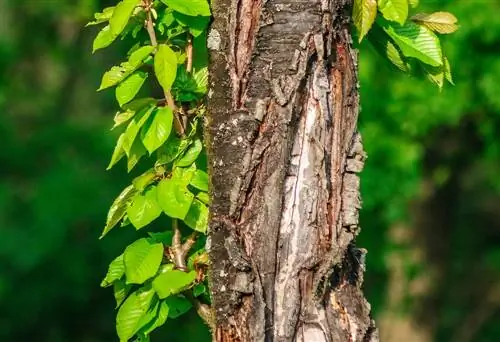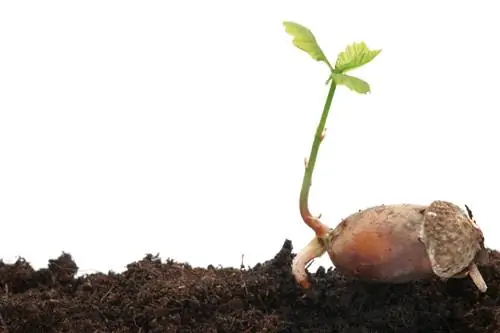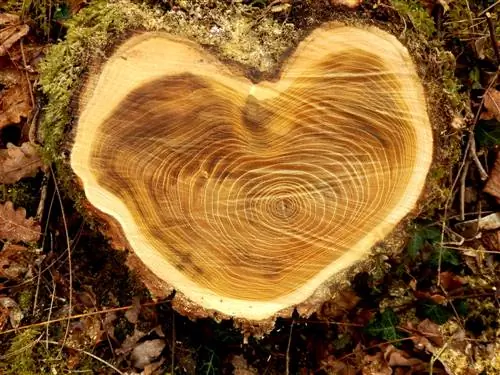- Author admin [email protected].
- Public 2023-12-16 16:46.
- Last modified 2025-01-23 11:19.
Cracked tree bark is a race against time. The natural wound wood formation takes forever. The tree trunk is at risk of rot, diseases and pests. Read here how you can help a wounded tree with chipped bark.

What to do if tree bark splits?
Treat cracked tree bark with awound closure agentor aclay packTrim all edges of the chipped bark smooth. Coat these wound edges with organic wound closure toaccelerated wound wood formation Optionally, cover the wound thickly with clay and a jute wrap.
Why does tree bark split open?
SevereTemperature fluctuations cause tree bark to crack. The phenomenon of stress cracks on fruit trees is often observed in late winter. Intense sunlight after a frosty night causes the bark to crack.
After wild browsing, water accumulates under the eroded bark. In winter the water freezes. As soon as the sun shines on it, the water accumulation expands and causes the bark to flake off.
Plane tree drops the bark
A natural process is the bark peeling off of plane trees. Every three years, plane trees shed their old bark for renewal.
Is cracked bark harmful to a tree?
Cracked bark can cause significant damage to a treeThe tree bark can no longer fulfill its protective function. Fungal spores and pests use the open wound as a gateway to the tree. The exposed sapwood is exposed to moisture, meaning that rot can spread to the heartwood.
How to repair cracked bark?
You can restore cracked bark with aWound Treatment. The aim is to activateaccelerated wound wood formation If a tree registers cracked bark, its cambium switches to repair mode and forms a callus that covers the open wound. Because this process takes many months, you can intervene to regulate it. This is how it works:
- Smooth the bark at the chipped edges with a sharp, disinfected knife.
- Apply organic wound closure agent (available at gardening stores) onto the edges of the wound with a thick brush.
- Alternatively, apply clay to the wound and wrap it with jute.
Tip
Lime coating prevents cracked bark
The most common cause of cracked tree bark can be eliminated with a coat of lime. White lime on a tree trunk reflects sunlight and compensates for winter temperature fluctuations. It is best to apply the paint every year before winter. A positive side effect is a deterrent effect on deer, rabbits and other bark eaters. Tree bark with a bitter limey taste is rarely nibbled.






